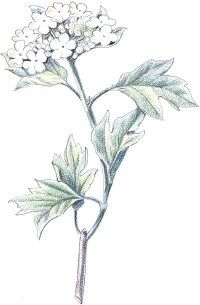As its name implies, cramp bark is useful to ease uterine cramps. But as a muscle relaxant, it also affects other organs, including the intestines and the skeletal muscles. Cramp bark is considered the most potent uterine antispasmodic of the various Viburnum species because it contains more of the antispasmodic constituent scopoletin.
Cramp bark also contains more antispasmodic volatile oils than other species. Cramp bark usually works rapidly for simple menstrual cramps. If it fails to relieve symptoms, the discomfort is probably not due to uterine muscle spasm but to inflammation or irritation of the uterus or ovaries, endometrial infection, or cysts. Cramp bark's close relative, black haw, also is useful for uterine cramps, congestion, and irritation in the uterus and ovaries with radiating pains, and may be better indicated for those types of complaints.
Cramp bark has been used to halt contractions during premature labor. It has also been used in the last trimester of pregnancy to build up uterine muscles and ensure an easy labor. Be sure to consult with an experienced herbalist or naturopathic physician before taking any botanicals during pregnancy.
The antispasmodic constituents in cramp bark also may lower blood pressure by relaxing vessel walls. When taken in large dosages (30 drops or more every two or three hours), cramp bark may reduce leg cramps, muscle spasms, or pain from a stiff neck.
